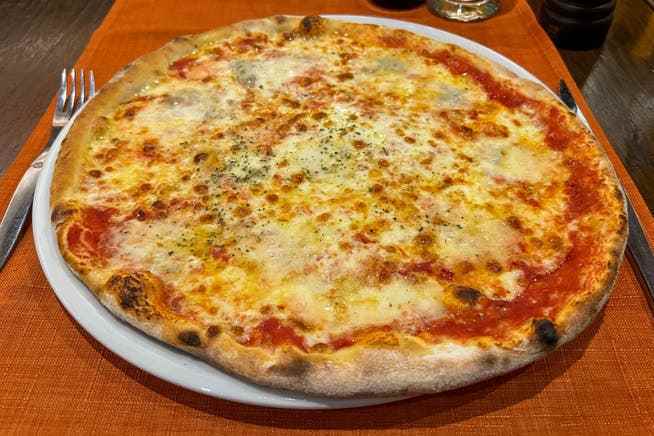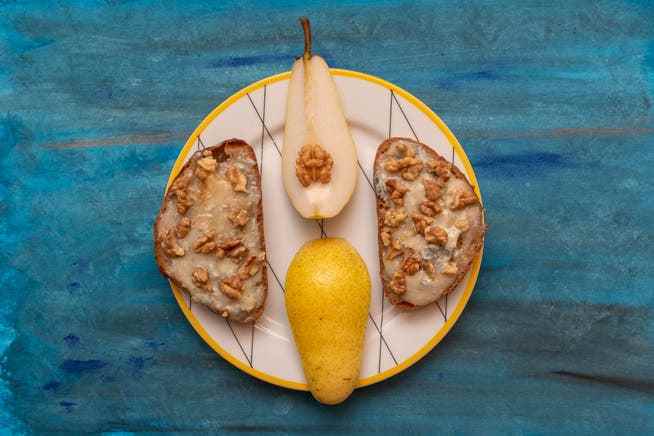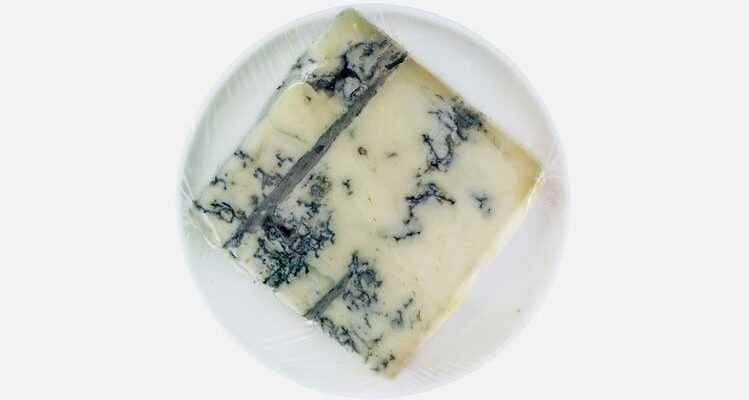Gorgonzola can develop quite a bit of character if you take it out of the fridge a few hours before eating. The history of blue cheese goes back at least to the 11th century.
This bluish-greenish veining was certainly undesirable at first and was seen as the result of a lack of cleanliness.
“What is this?” Lu Chuan’s face looked surprised, incredulous, maybe there was even a hint of disgust – or was it just my imagination? On my first visits to Taipei, Lu had introduced me to specialties like stinky tofu and frog spawn at night markets, savored balsam pear, duck tongue and goose testicles in restaurants—all things that were foreign to me, little challenges for my European palate, or more for my brain, which was very conservatively brought up in food matters.
And now I was finally able to amaze my Taiwanese friend with a delicacy from Europe: gorgonzola. I told her that the cheese got its name from the Gorgons, ancient monsters whose eyes could turn any living creature into stone. To avoid the deadly gaze, a cowherd hid behind a jug of milk. When he later made cheese from the milk, it was full of dark, petrified veins. I got the legend from a tourist guide in Milan. I like it better than the origin stories that are usually told and in which a farmer, a shepherd boy or an innkeeper forgets a jug of milk or cream cheese somewhere, which then begins to go moldy. In fact, Gorgonzola got its name from the village of the same name near Milan, which is considered one of the places of origin of the cheese. Today the production centers are in Novara and Vercelli.
The history of cheese goes back at least to the 11th century. On the smaller farms of the time, it was customary to pool the soured milk from several milkings until there was enough for a full cheese loaf. This often resulted in contamination that allowed mold to grow. This bluish-greenish veining was certainly undesirable at first and was seen as the result of a lack of cleanliness. The “invention” of Gorgonzola was probably a lengthy process, in the course of which one learned to appreciate the mistakes that kept appearing.

An absolute classic of Gorgonzola cuisine is the Pizza al Gorgonzola, where the blue cheese is usually mixed with mild mozzarella.
Today, Gorgonzola is mostly made from the milk of a single milking, and so-called noble fungus cultures are added to the cheese curd (Penicillium roqueforti) to. To ensure that the mold grows optimally and is distributed as regularly as possible, holes are also drilled into the loaf with long needles from a certain degree of ripeness. These arrow-straight tunnels are still clearly visible in the finished cheese. Gorgonzola wheels usually weigh ten to fifteen kilograms and have a fat content of at least 48 percent. After a short maturation of about two to three months, the cheese is called Gorgonzola dolce or new sold and is typically very mild and creamy. After three to six months one speaks of Gorgonzola picante or vecchio, now the cheese is drier, crumblier, saltier and sharper. Certain variants can also be stored for up to a year and develop a tremendous aroma.
But even an ordinary Gorgonzola piccante can develop some character if you take it out of the fridge a few hours before you eat it. As it melts in the mouth, the fat sticks to the palate in a wonderful way, while the mold provokes a slight ripple on the tongue. Part of the charm of Gorgonzola is due to the scent of the reddish rind, which can contribute slightly musty and nitrous notes and partially sinks into the paste of the cheese with the heat. I also like to eat some of the rind, because its aroma makes the cheese more exciting and varied. However, some have the rind removed by the retailer, so the gorgonzola behaves less cheekily in the fridge and tastes purer and milder at the table.
Maybe Lu Chuan wouldn’t have been so impressed if I’d placed a piece of gorgonzola freshly cut from a cool loaf in front of her. But this tranche had traveled with me from Zurich to Taipeh and looked a bit battered, sweaty, agitated, with a yellowish color and dark, almost liquid veins. However, Lu did not let the sight bother him for long. She curiously brings her nose up to the cheese, “Oh, smells like fermented tofu”, put a knife tip in her mouth, frowned briefly, but after a few seconds her eyes lit up. Since then, whenever I meet Lu, I always bring a huge piece of Gorgonzola with me. However, the name of the cheese doesn’t seem right on her tongue, so she still speaks of “What is this” to this day.
Crostini di Gorgonzola and noci con pere

Especially in early autumn, when the fresh pears come onto the market, there are fantastic encounters between them and the blue cheese.
Gorgonzola is an excellent table cheese. However, it is also used particularly often in the kitchen, and there are plenty of recipes, from pizza, risotto or pasta with gorgonzola to salads, sauces or meat dishes. Gorgonzola goes well with many things, but it has a particularly good relationship with pears and walnuts.
In Lombardy and Piedmont, I occasionally enjoyed a small appetizer or dessert that made the most of this combination: Crostini di Gorgonzola e noci con pere. I like to tinker them, although I prefer to use firm nut bread instead of white bread. Especially in early autumn, when the fresh pears come onto the market, there are fantastic encounters. With Gorgonzola dolce, the result is a little sweeter and creamier, with Gorgonzola piccante the slices have even more pep, but are perhaps too salty and too hot for some mild pears.
ingredients
- 4 slices of nut bread about 1 cm thick
- 4 tablespoons Gorgonzola
- 4 nuts
- 2 pears
preparation
- Spread the slices of bread regularly with Gorgonzola.
- Shell the nuts and break up the core slightly. Distribute the seeds evenly over the Gorgonzola slices.
- Bake the slices in the 180 °C oven for about five minutes.
- Quarter and core the pears, serve with the hot sandwiches.
